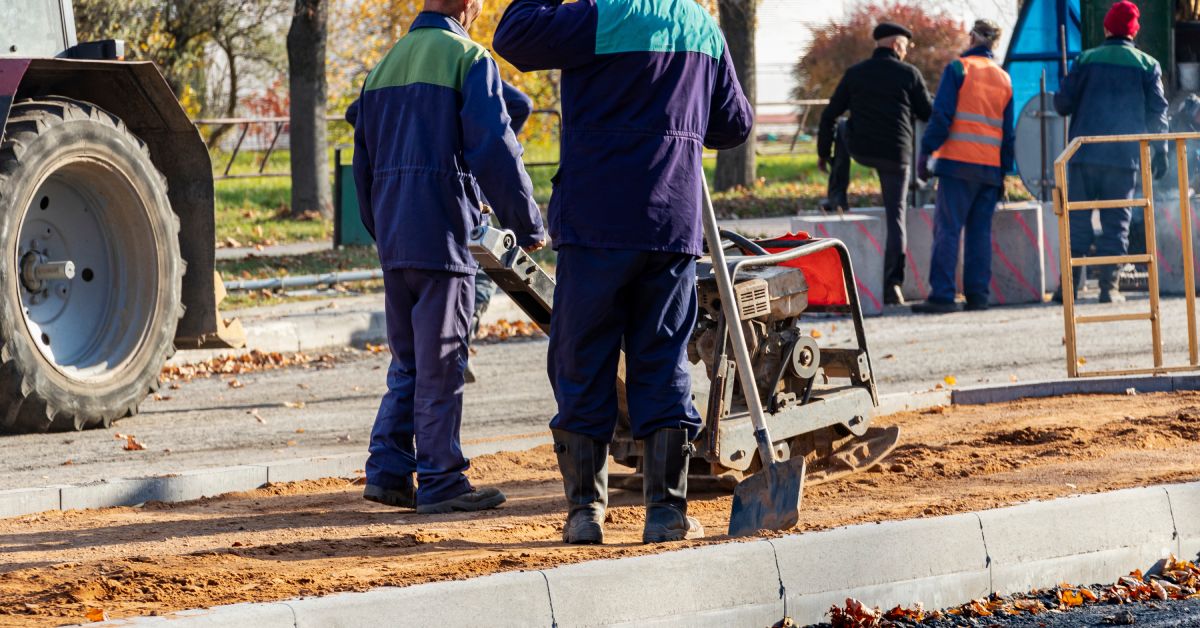August 27, 2024

Making durable and smooth asphalt pavement goes beyond just pouring hot mix asphalt; it's all about mastering the art of compaction. This crucial step in construction guarantees the longevity and quality of your pavements.
Getting the hang of asphalt pavement compaction is key to achieving great results for contractors, facility managers, and business owners. Here’s a quick guide to help you understand the essentials of asphalt pavement compaction.
Proper compaction of asphalt is crucial for several reasons. Primarily, it increases the density of the material, reducing air voids and making the pavement less susceptible to water infiltration. This leads to enhanced durability and a longer lifespan for the pavement. Additionally, well-compacted asphalt provides a smoother driving surface, which is essential for both safety and aesthetics.
Before starting the compaction process, it's vital to ensure the base layers are properly prepared. The subgrade should be uniform and stable, providing a solid foundation for the asphalt. Check for any soft spots or debris that could disrupt the compaction process. A well-prepared base layer sets the stage for successful asphalt compaction.
Choosing the right equipment is a critical step in the compaction process. Vibratory rollers are commonly used for asphalt compaction because they provide the necessary force to compact the material effectively.
Make sure your equipment is well-maintained and appropriate for the size and type of asphalt mix being used. Using the right tools can significantly impact the quality of your compaction efforts.
Compaction is typically carried out in multiple passes to ensure even density throughout the pavement. The initial pass, known as the breakdown pass, is done using a vibratory roller while the asphalt is still hot.
This is followed by intermediate and finish passes to achieve the desired level of compaction. Timing is crucial; working too slowly can result in cooled asphalt, making compaction less effective.
Temperature plays a crucial role in asphalt compaction. The ideal compaction temperature ranges between 275°F and 300°F. Working within this range ensures the asphalt is malleable enough to compact effectively.
Use an infrared thermometer to monitor the temperature and make adjustments as needed. Straying outside this temperature range can compromise the quality of your compaction.
When laying asphalt, ensure each layer is not too thick. Overly thick layers can be challenging to compact uniformly, leading to weak spots in the pavement. Aim for layers no thicker than 2 to 3 inches. This allows for optimal compaction and ensures the pavement will perform as expected over time.
Once the compaction process is complete, it's essential to maintain the pavement to preserve its quality. Regular inspections and prompt repairs can prevent minor issues from becoming major problems. Implementing a routine maintenance schedule helps extend the lifespan of your asphalt pavement.
Utilizing blacktop repair products from NAC Supply is essential for maintaining your pavements and ensuring they look great and perform well. Mastering the techniques of asphalt compaction can significantly enhance the success and durability of your paving projects. We hope that our quick guide to asphalt pavement compaction will help you achieve the best results for your surfaces.
Comments will be approved before showing up.
December 08, 2025
October 08, 2025
October 02, 2025
Asphalt crack repairs can be a meticulous process. One step you don’t want to skip is routing, as this provides many benefits to sealed cracks.